U.S. Woman Rediscovers Florence’s ‘Wine Doors’
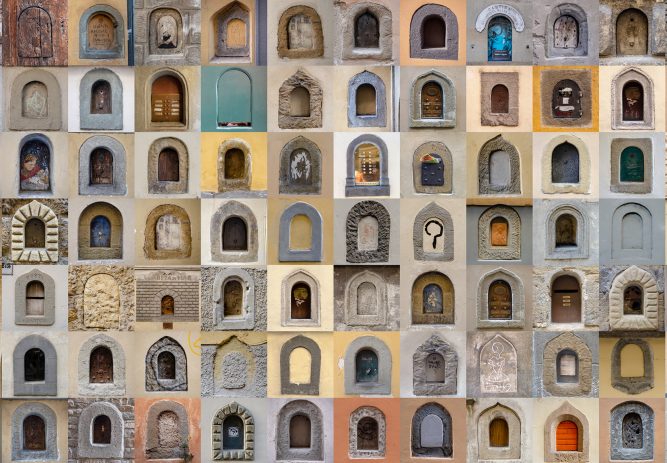
It took a young American woman, Robbin Gheesling, to rediscover and bring attention to Florence’s miniature “wine doors” on the façade of ancient buildings in the last decade. Her story is being highlighted in the Magenta Florence series highlighting notable women during the week of International Women’s Day on March 8.
Walking through Florence in the labyrinth of streets between the Duomo and the River Arno, one might come across a curious sight. Several people, socially distanced of course, can be seen waiting patiently in front of a small arch-shaped opening in the wall. Soon a little door opens, a smiling face appears, and a hand extends a container of gelato which the patron happily accepts. “Un caffe’?” “Si grazie,” responds the customer and the hand proffers a cup of espresso.
The spot, Florence’s famous Vivoli Gelateria, dating back to 1929, has reinstated a tradition harking from medieval times. In the 15th century, Cosimo de Medici, wealthy banker and ruler of Florence, granted noble families the right to sell wine from their estates directly to the public. This privilege was later solidified by a Grand Ducal decree. By dodging taxes and the middleman, they were able to make a better profit. Then a second wave of the Black Death appeared in the 17th century, ravaging all of Europe. Although knowledge of contagion and germ transmission was not known, the aristocrats somehow sensed the importance of isolation and avoided direct contact with the lower classes.
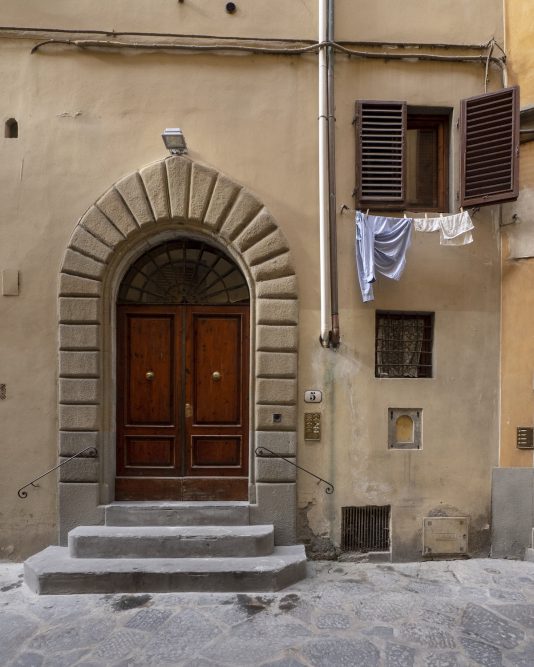
Gheesling, who earned a master’s degree in Italian Studies at the Middlebury Florence campus, has extensively researched the “wine doors.” Along the way, she learned that Vivoli’s “wine door” only became visible after raging waters of the Arno river washed away plaster on the building during the great 1966 flood. She also discovered that a number are still open, while others are walled up. Gheesling photographed these unique historical features on Renaissance buildings in the context of contemporary life. A show of her work will be exhibited at the Paperback Exchange Anglo-American bookshop (Via delle Oche 4/r, near the Duomo, open Monday – Saturday 10 am – 7 pm in the “orange zone” and 10 am – 3 pm in the “red zone”), through April 6. Concurrently, Florence’s “Wine Doors” will be the focus of the CNN “Searching for Italy” episode airing on March 14 and hosted by Stanley Tucci.
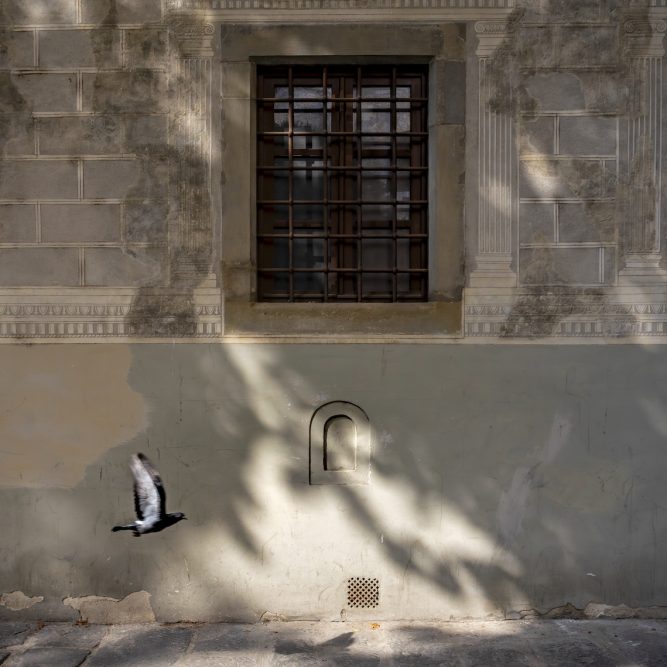
During the Renaissance, it was recommended to drink at least one liter of wine per day for health reasons. In fact, all medicinal preparations contained alcohol along with herbs and other botanicals. Water was not widely consumed as the bacteria it contained made people ill. Imbibing wine, therefore was more common than drinking water.
The wine sellers realized that by creating small windows in the walls of their palaces, clients were able to bring their own flasks to fill with the wine produced in the hillsides surrounding Florence. The sellers did not receive payment directly from the clients, instead they extended a copper scoop for the coins which were disinfected with vinegar, thereby carrying out a ‘touch free’ transaction. These wine doors, often called porte del paradiso, or gates of paradise, in use until the early 20th century, still exist all over Florence and others can be found in Pistoia, Barberino di Mugello and Borgo San Lorenzo, but are unknown outside of Tuscany.
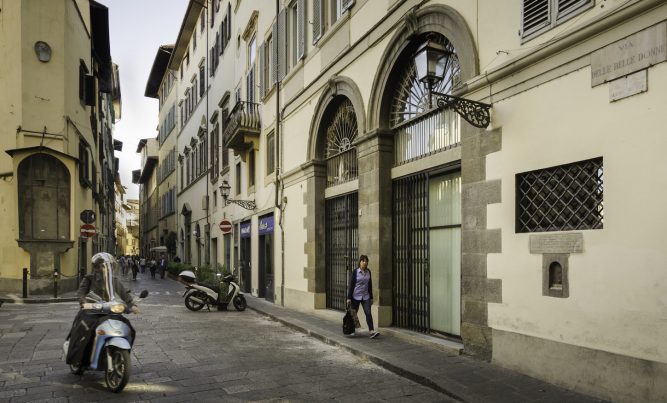
With the 21st century pandemic, the ever-innovative Tuscans, not wanting to forgo their eating and drinking traditions and adapting to the COVID crisis, have revived an ancient practice. Vivoli opened up their wine door in May 2020 and several other establishments followed suit. Osteria delle Brache, on Piazza dei Peruzzi, offers Aperol Spritz and other cocktails as well as wine, through their wine door. Across the river in the San Frediano neighborhood, visit Babae, via Santo Spirito 21R, between 7 and 8 pm, ring the bell at the wine door and order a glass of wine.
Whether your paradise might be creamy gelato or a glass of Chianti, just knock on the little door to the window of participating establishments, place your order and enjoy a socially distanced refreshment al fresco.
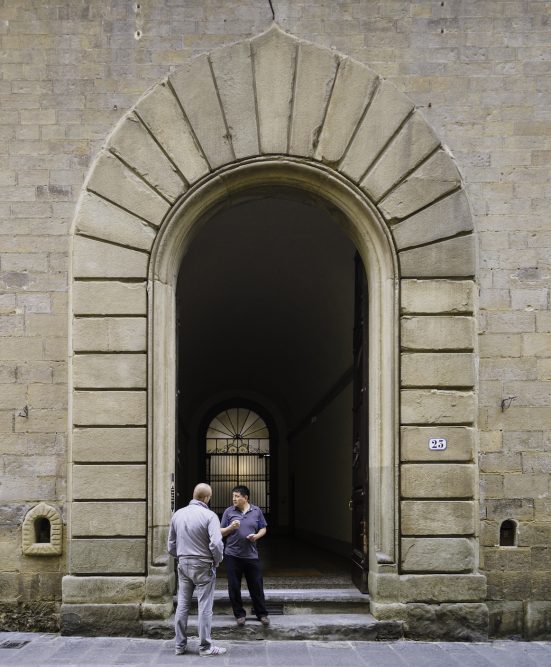
For aficionados of this iconic Renaissance city, Gheesling’s website also offers an online shop of hand numbered and signed prints of street photography with the iconic presence of Florence “wine doors,” in addition to a handmade photographic book that won the Italian wine photography award given by the World Cookbook Fair and Gourmand International. (rita kungel/additional reporting by rosanna cirigliano)
